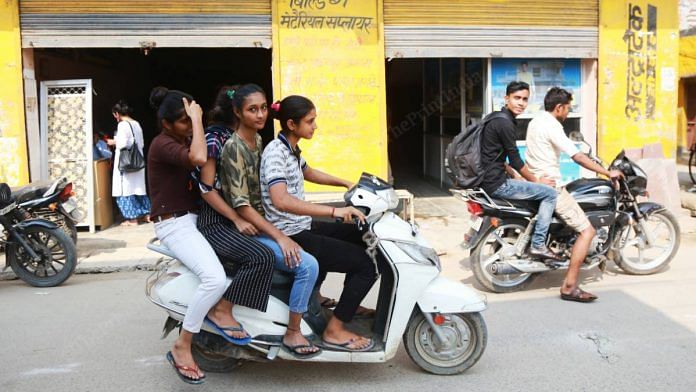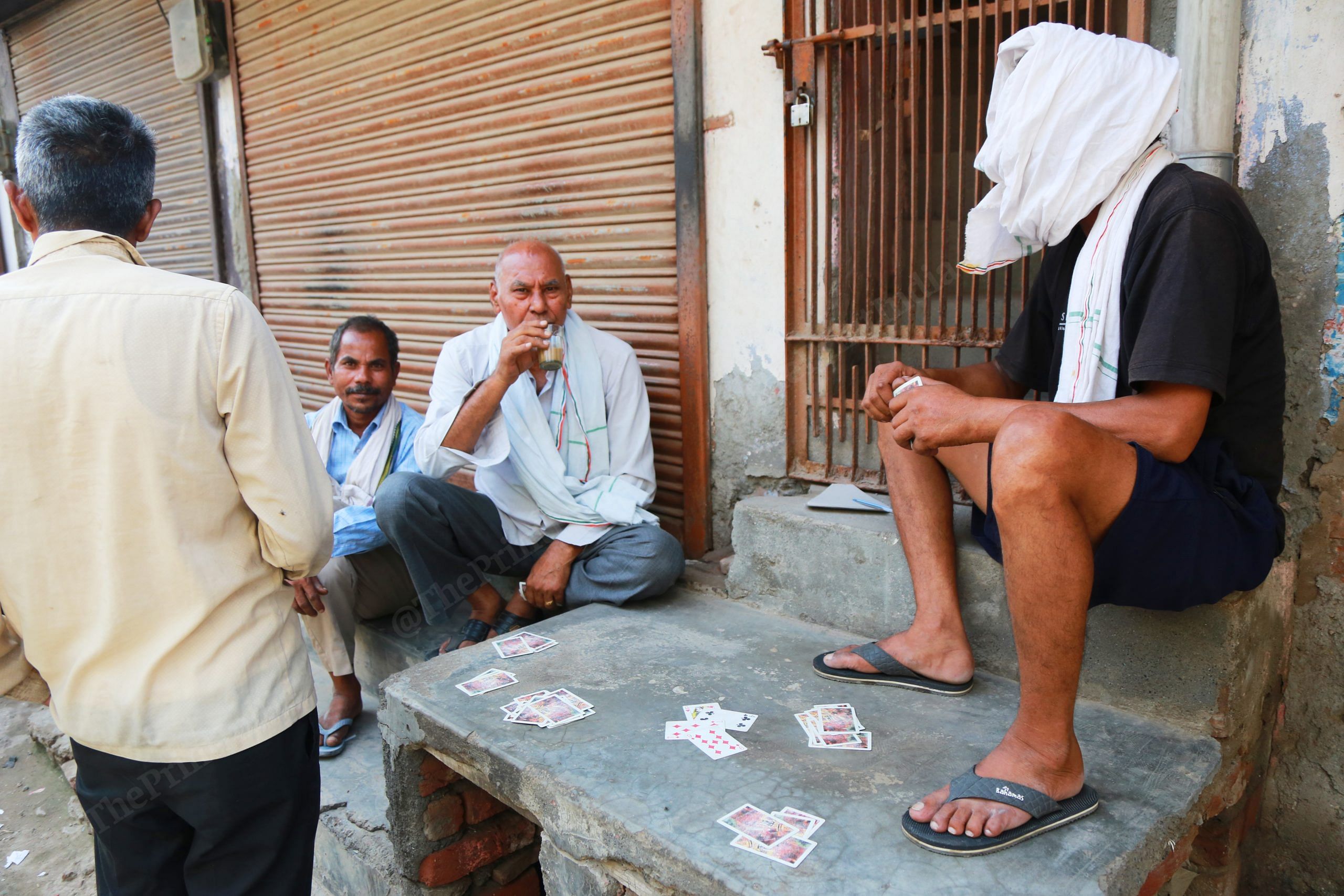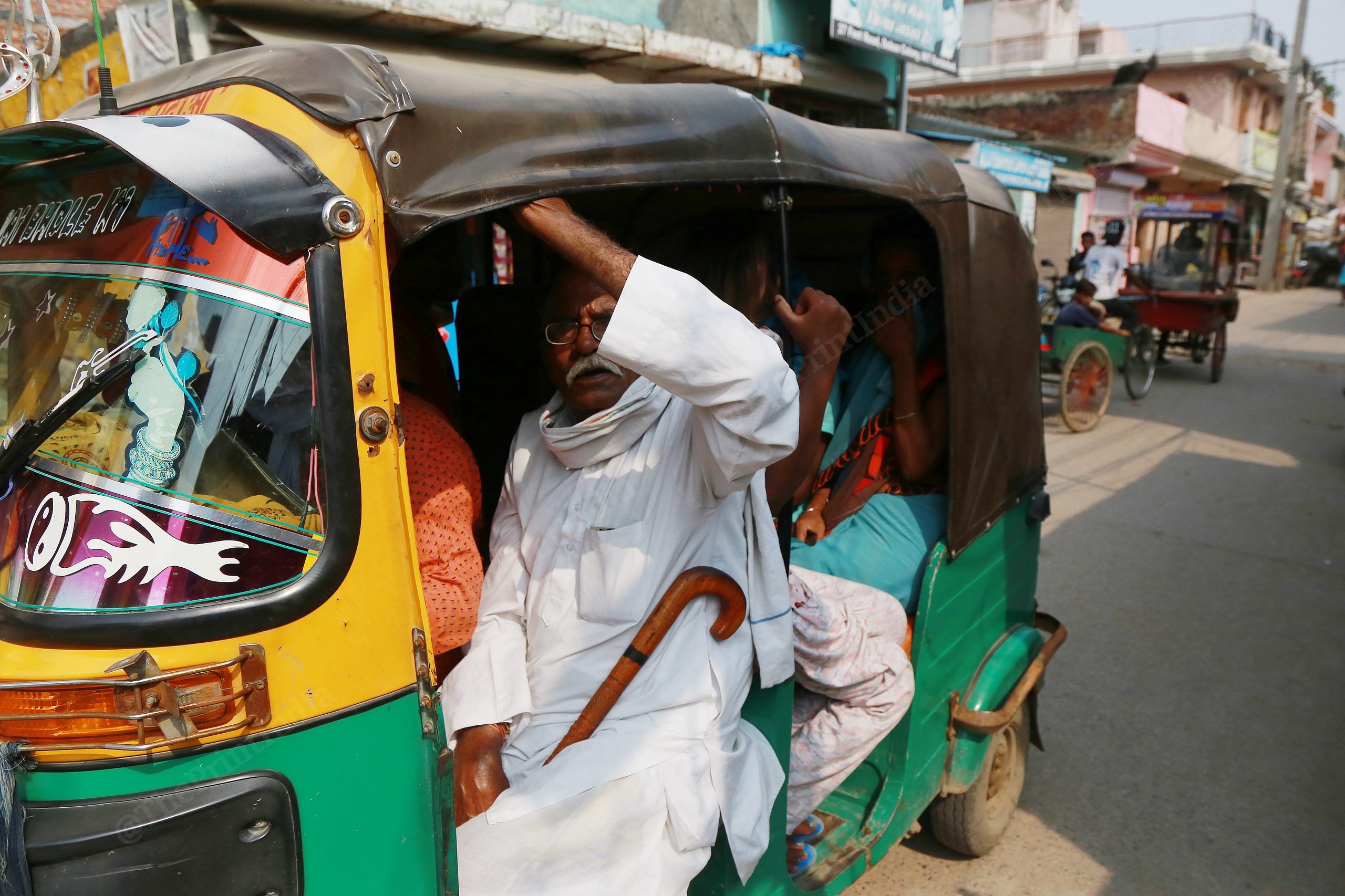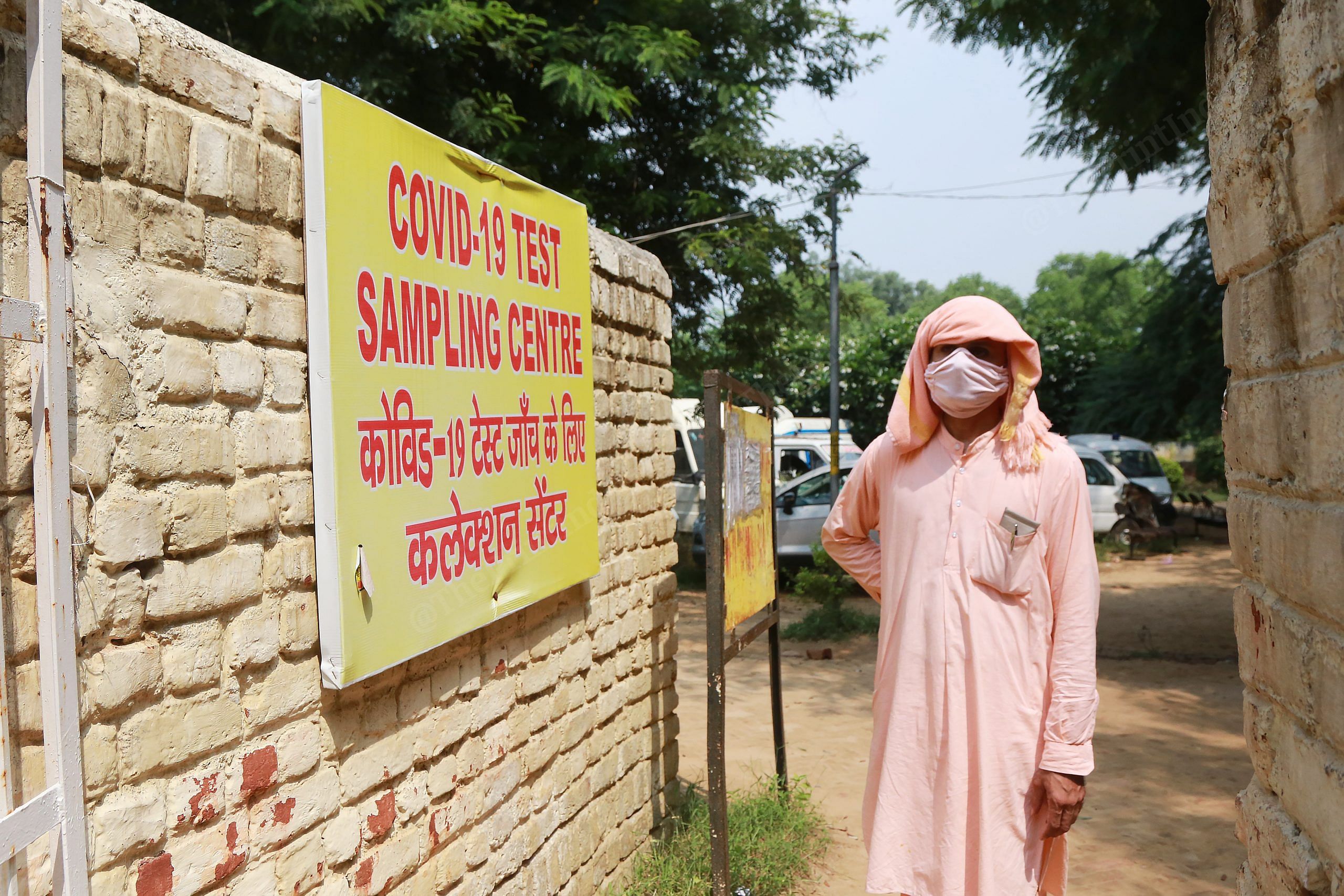
Faridabad/Gurugram: The surge in coronavirus infections in Delhi has not only been causing a spike in the national capital’s caseload, but also that of the neighbouring districts of Faridabad and Gurugram in Haryana.
According to the state’s health bulletin, Faridabad and Gurugram are the two Haryana districts with highest caseload. These two are also among the top 10 districts in the country, and have among the highest Covid transmission rates — measured as Rt value, which indicates how many people a single infected person can pass on the disease to, and illustrates the severity of an outbreak.
Officials ThePrint spoke to in these satellite districts said the disease was spreading due to the porous borders with Delhi, which allows constant movement of people. However, they said this surge should be seen as the normal course of the virus.
Also read: Covid deaths increasing only in Delhi & Karnataka among 5 high-burden states, says govt
Faridabad vs Gurugram vs India
According to the Haryana health bulletin, the state saw a total of 85,944 cases as of 10 September, including 907 deaths and 66,705 recoveries. Together, Faridabad and Gurugram have 29,312 cases, accounting for around 35 per cent of the state’s total cases.
As of 10 September, Faridabad recorded 15,003 cases, making it the district with the highest caseload in Haryana. It also has the highest number of deaths in the state at 183. Faridabad’s Rt value is 1.44, the sixth highest in the country, according to Covidtoday.in, a volunteer-run website tracking the spread of the SARS-CoV-2 in the country.
Faridabad’s positivity rate — the percentage of samples testing positive — was at 9.4 per cent on 7 September, registering higher than the national average of 8.24 per cent. The number, according to the data shared by Haryana government officials with ThePrint, marginally rose from 9.2 per cent on 1 September. The case fatality rate, which was recorded at 1.26 per cent as of 9 September, is the highest in the state.

Second to Faridabad is Gurugram, which, as of 10 September, recorded 14,309 cases — 12,219 recoveries and 140 deaths.
State officials, however, said unlike Faridabad, the district has been able to contain its positivity rate, bringing it down to 6.98 per cent on 9 September from 20 per cent in June. This is well below the national average. Its case fatality rate was at 1.02 per cent as of 9 September.
The most concerning number in both districts, though, is the high Rt value. While the national average is 1.08, Gurugram’s was at 1.27 as of 10 September.
Officials said the high numbers were partly due to the increased testing being carried out. Gurugram tested 1,89,355 samples while Faridabad conducted 1,51,117 tests as of Thursday, the state data showed.
Also read: High crime rate, lost green cover: Gurugram has many problems, but it’s getting a makeover
Unlock measures, densely populated areas
State officials say the high numbers are due to the porous borders with Delhi and the high slum population.
“We have the highest slum population in the country after Mumbai. People live very close together in small spaces, so infection spreads easily,” said Dr Randeep Poonia, chief medical officer of Faridabad district.
Deputy Commissioner Yashpal Yadav said people’s movement in and out of the district has led to the infection spreading further.
“Many residents live in Delhi or work in Delhi and keep moving in and out of the district. People from other parts of the country, like Agra and Mathura, also use Faridabad to move to other districts, which has contributed to the spike … but we have enough facilities and are well equipped to deal with the caseload,” he said.

In Gurugram, though, officials said the spike was only due to the unlock measures. “Now that the lockdown has opened, this is bound to happen. We can’t be blaming other districts for the inflow of infections,” said Gurugram Chief Medical Officer Dr Virender Yadav.
“Cases are going to increase, we can only improve the situation by containing, testing and isolating. According to ICMR’s prediction, we expect the number of cases in Gurugram will reach 17,000 by 15 September,” he added.
District Magistrate Amit Khatri told ThePrint that the only way to tackle the issue is by “increasing the number of containment zones and aggressive testing”.
In the past week, the number of containment zones in the Gurugram increased to 67 from around 40.
Apart from this, the district also intends to ramp up testing.
Dr Virender also noted that in the past few weeks, most of the cases were of families, in which at least three to six members were testing positive.
Also read: Delhi sees positivity rate rise though daily Covid testing triples since August
People getting complacent
The challenge now is to contain the rate of spread of infection as well as shake people out of complacency.
When ThePrint visited Faridabad’s largest containment zones Dabua Colony and Jawahar Colony, neither were there barricades demarcating the containment zone nor were people wearing masks.
DC Yadav said they now want to focus on creating localised containment zones. “We want to allow economic activities so only clusters of houses are being made into containment zones to allow people’s movement.”

At Gurugram’s containment zones of Sushant Lok, Maruti Vihar, South City I and Phase III, the situation was the same, with no barricades, security or posters with health guideline.
DM Khatri said localised containment zones were being determined on the basis of as few as two to three cases.
“Initially, we were taking five minimum cases as a benchmark for a containment zone, but now it has been brought down to two or three cases,” he said. This increases the number of containment zones with the aim of breaking the virus’ chain of transmission. For people breaking social distancing protocol, the district has increased the penalty to Rs 2,500 from Rs 500.
On the lack of barricades, Gurugram’s sub-district magistrate Manisha Sharma promised to look into the matter, but noted that people needed to be more conscientious.
“The only way to overcome this challenge is for people to take care of themselves, wear masks and isolate in case they come in contact with anyone,” Dr Virender said.
In Faridabad too, the administration is planning to restart awareness programmes. “We used to have public announcements spreading awareness across containment zones and all colonies … We will restart them as people are not wearing masks and not complying with social distancing norms,” said DC Yashpal Yadav.
Also read: Najafgarh jheel to nala — How Delhi and Gurugram ruined their second-largest waterbody

COMMENTS